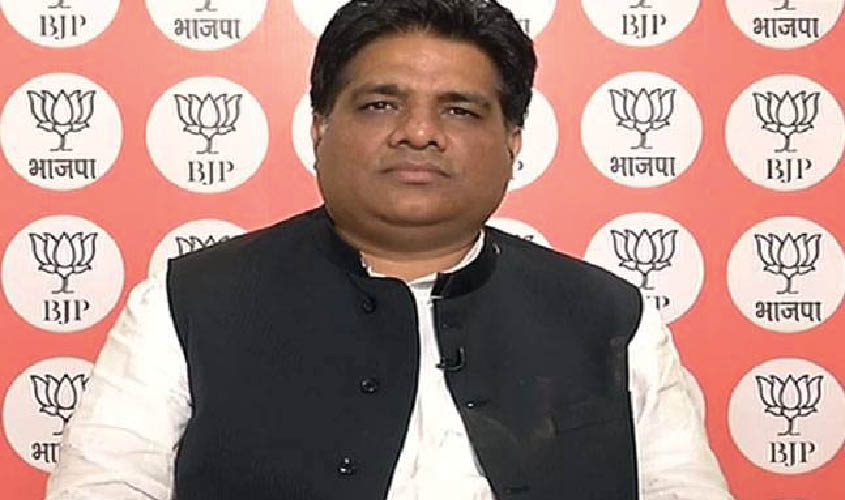‘Increase in polling will benefit BJP rather than Grand Alliance’.
New Delhi: Out of the 16 seats in Bihar that are a part of the sixth and seventh phases, the Bharatiya Janata Party had won 13 of them in 2014, with the remaining three being won by the Rashtriya Lok Samata Party (RLSP), which was a part of the National Democratic Alliance (NDA) in 2014. One seat was won by the Janata Dal United (JDU), which is now a part of the NDA, but had contested alone in 2014. The saffron party had at that time contested 30 seats and won 22 seats, while it is contesting on 17 seats this time.
It is because of this arithmetic that the BJP believes that its chances are the brightest in the seats that went to the polls in the last two phases.
The seats that went to the polls in the sixth phase included Valmiki Nagar, Paschimi Champaran, Purvi Champaran, Sheohar, Vaishali, Gopalganj, Siwan and Mahrajganj.
All these eight seats were won by the BJP in 2014. The seats that are going to polls in the seventh phase will be Nalanda, Patna Sahib, Pataliputra, Arrah, Buxar, Sasaram, Karakat and Jahanabad. Of these eight seats, the BJP had won on all the five except Nalanda (JDU), Karakat (RLSP) and Jahanbad (RLSP).
“If we are able to maintain our performance in 2014, the NDA will easily win 30 seats in the state. The 16 seats that will witness polling (in the sixth and seventh phases) are our area of strength,” a Patna-based BJP functionary said.
This is also the reason why the BJP has wielded its trump cards of Amit Shah and Narendra Modi in these seats. While Amit Shah campaigned in Patna for Ravi Shankar Prasad, Modi campaigned in Palliganj for Ram Kripal Yadav and in Buxar over reports that Ashwini Choubey was facing a tough fight from Buxar.
BJP strategists believe that the overall increase in polling in the state was going to benefit it rather than the Grand Alliance.
“Past elections, both state and general, have proved that whenever the voting has increased compared to the last election, it has benefited us. It is a proven fact that for the last few years, the choice of first-time voters is Modi and BJP. In this election, we have noticed that the voting has been more than in the last elections,” the party functionary added.
However, Rajiv Kumar Jha, national spokesperson, Youth RJD, believes that first-time voters, cutting across caste and religion, are voting for the Grand Alliance. “As per our assessment, we are going to win the maximum number of seats in the state. People are voting for us because of Tejashwi Yadav’s popularity. We are also getting the votes of the forward castes. The Grand Alliance candidates were chosen on the basis of caste equations in the respective seats and their own popularity on the ground,” he said.
The increased voting has been an overall trend in all the seats of Bihar, which had seen 56.26% polling in 2014. In contrast, till the end of the sixth phase in 2019, the polling percentage has already crossed 59%. With the majority of the urban seats going to polls in the last phase, it is expected that the polling percentage will increase even more.
The fact that more voters came out to vote this time in the seats that went to polls in the sixth phase, which went to polls on 12 May, is also being seen by the BJP functionaries as a sign that it was going to do well in the eight seats that went to polls. In the sixth phase, which went to polls on 12 May, the voting percentage was 59.29%, while in 2014 it was 57.26%.
According to BJP functionaries, the NDA has not done well in the initial phases and the maximum loss that it was going to suffer was in those seats which had gone to the polls in the initial phases.
In 2014, BJP had got 29.40% votes, LJP 6.40% and JDU 15.80%. According to BJP strategists, the nearly 30% votes that they got in 2014 are intact even now and whatever losses they are going to suffer will be on account of the LJP and to some extent the JDU.
“We have entered this election with more than 51% vote share. If the polling had been on the lower side, we would have been worried, but the polling in all the phases have been more than in 2014. We believe that apart from our core voters, this time we are getting the votes of even Yadavs, Muslims and a certain section of the backward castes because of the development work that has been done in the last five years which has benefited everyone, irrespective of caste and religion. Also, Nitish Kumar, who was not a part of NDA in 2014 but is now a part, will bring votes, not decrease votes, for us. Add to it the first-time voters, a majority of whom will vote for us. We see no reason that should worry us,” the party leader quoted earlier said.
In the first phase, which was held on 11 April, in which Aurangabad, Gaya, Nawada and Jamui went to the polls, 53.44% polling was witnessed, which was 51.82% in 2014.
In the five seats of Kishanganj, Katihar, Purnia, Bhagalpur, Banka that went to the polls in the second phase on 18 April, 62.92% polling took place, in comparison to 61.96% in 2014.
In the third phase on 23 April, the five seats of Jhanjharpur, Supaul, Araria, Madhepura, Khagaria saw 61.20% voting, which was 59.83% in 2014.
In the fourth phase polling, too, 59.27% of voters inked their choices in Darbhanga, Ujiarpur, Samastipur, Begusarai and Munger on 29 April, compared to 57.36% in 2014.
In the fifth phase, which was held on 6 May, the five seats of Sitamarhi, Madhubani, Muzaffarpur, Saran and Hajipur saw 57.08% polling, which was 56.44% in 2014.

